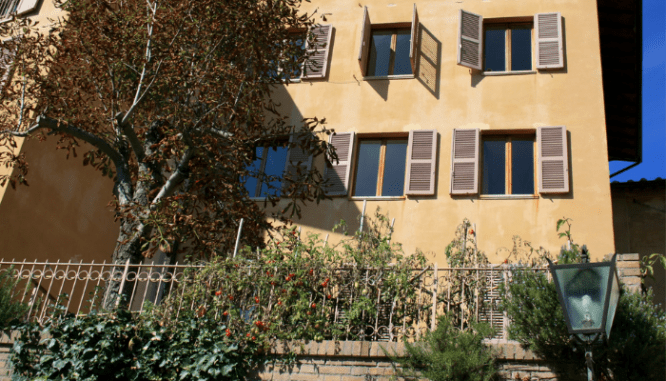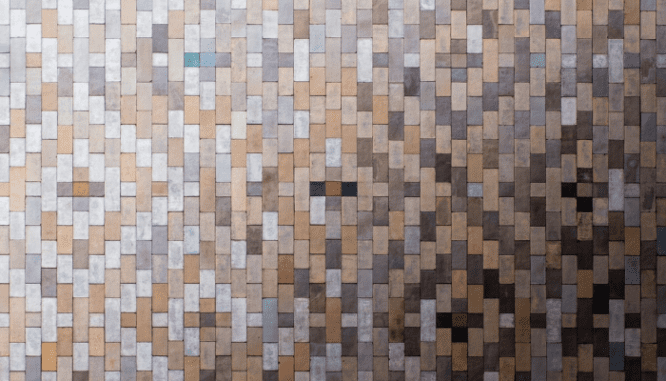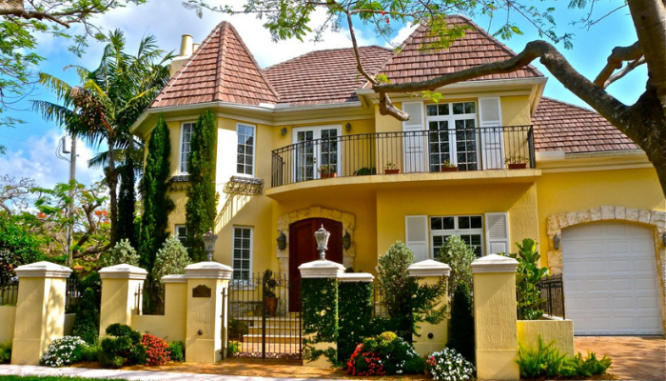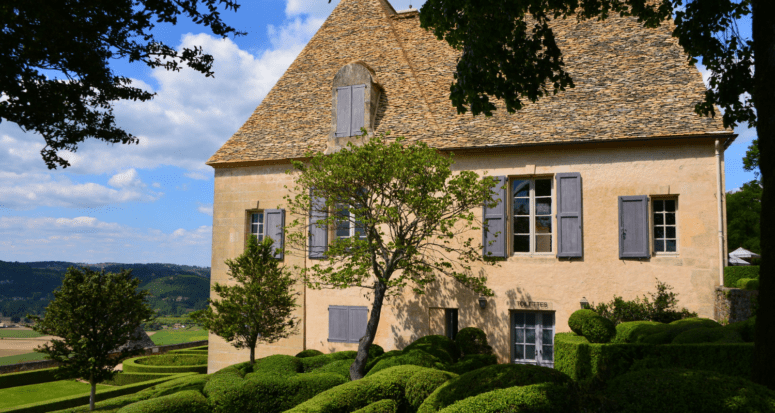Balance, Symmetry, and Romantically Rustic Style: Is a French Country House Right for You?
- Published on
- 8 min read
-
 Karen LeBlanc Contributing AuthorClose
Karen LeBlanc Contributing AuthorClose Karen LeBlanc Contributing Author
Karen LeBlanc Contributing AuthorKaren LeBlanc is a professional journalist, lifestyle writer, and TV host. She is the design and travel editor of a national lifestyle publication, and a contributing writer for several regional and national magazines. She is the founder and primary writer of lifestyle blog www.TheDesignTourist.com and streaming series.
The siren call of a French country house is most vocal in the evenings as you settle down in front of a stone or brick fireplace and glowing embers cast dancing shadows on the brick floors, wood beams, and plaster walls. You bask in the warm embrace of sensory-soothing natural materials — the woolen throw, the linen-upholstered couch, the textures and patinas that ground you at home and in history. Welcome home to the French country lifestyle.
This romantically rustic style evolved from the countryside of France to neighborhoods across the U.S. with widespread interpretation. The look is effortlessly chic and includes many architectural variations from French farmhouse to chateaux, French colonial, and Creole to Acadian.
Celebrity Interior designer Jonathan Rachman says the style ranges from rustic to stately homes. “French country style has a certain romantic aurora. People perceive the look as tasteful and refined, with rustic sophistication. French country style doesn’t look contrived, unlike much of American interior design that is so matchy and matchy, ” says Rachman. The San Francisco-based interior designer works with high-profile clients and finds those drawn to French country homes tend to want natural materials and a collected, evolved look to their decor.
The National Association of Realtors® refers to the style as French provincial, an architectural style with balance and symmetry. Curb appeal comes from steep, pitched, slat, hip roofs, brick or stucco facades, front porches, arched windows with shutters, and French doors.

Close cousins of French country style
French country style is subjective; it’s a design and decor ethos — an idea, attitude, and ambiance rather than a codified, strict set of architectural and design principles. There are several close cousins of French country architecture.
French Creole and Acadian styles
You’ll find a broad interpretation of French country architecture depending on geographical and cultural influences. For example, Louisiana’s versions are French colonial, French Creole, and Acadian styles. Envision homes with front porches and flickering copper gas lanterns, and pitched roofs overlooking front yards with moss-draped oak trees and bubbling sugar kettle fountains.
Louisiana can thank architect A. Hays Town for popularizing the architectural vernacular known as French Creole, drawing influences from Spanish and French architecture. Town used salvaged and repurposed materials — such as wood plank floors, beams, and bricks — in his homes for rich tactile experiences grounded in history.
Many of Town’s signature architectural elements are typical of the French country style, including simple rooflines, French doors, arched doorways, and arched windows and shutters. He crafted homes using regional materials — such as cypress wood harvested from Louisiana’s swamplands — for beams, plank floors, and cabinetry.
French colonial
French country and French colonial also share a common architectural language and borrow elements from each other. According to Edward Cazayoux, a fellow of the American Institute of Architects who wrote several academic papers on French architectural styles, French colonial originated in the 16th and 17th centuries as France colonized tropical regions. “People came to colonize Louisiana mainly from the regions of Normandy, Brittany, and Calvados. The main type of construction they brought was Colombage framing, a heavy or half-timber framing,” says Cazayoux.
The French first erected Colombage framing on the ground but lifted the framing system onto cypress or brick blocks after experiencing high water tables and seasonal flooding issues. Colombage framing offered the advantage of prefabrication because craftspeople could cut and shape the framing components and ship them to a site.
Other common framing systems at the time included barge board construction using walls with beams and sills connected with vertical boards; piece-sur-piece (or piece-en-piece), a log cabin style that stacked large thick boards together with dovetail connections; and balloon framing, a stud system on the sills or the floor decking.
In France, they infilled this timber framing with stone, brick, slate, or earth mixed with straw. In Louisiana, they did not find these types of mass materials. Instead, they picked up on the Native American technique of mixing mud and retted Spanish moss for their wattle and daub construction.
This type of infill material is known as bousillage, a stylistic carryover evident in French country homes with exposed wood-framed and rough stucco walls. The bousillage would have been plastered over or at least lime washed to finish. This mixture of clay and Spanish moss serves as a natural fire retardant and keeps rooms cool.
“Human comfort was the important thing in historic France to these people and not style. In America, it is just the opposite — all style and no human comfort,” says Cazayoux.
You can spot a French colonial home by its hip roof design, crafted of heavy trusses. “These hip roofs are steep on the longer sides, and even steeper on the ends, and covered in clay tile or slate. The steepness helps shed the rain and snow,” says Cazayoux. Porches on the front and rear or all four sides of the house extend the roof edges to protect the exterior walls.
French Provincial
French country style is synonymous with the Norman style or French provincial home in other parts of the nation and takes design cues from French chateaus. The stucco-clad facade, stone arched door surrounds, slate roofs, and a Juliet balcony, harken back to early 17th century French architectural influences. Dormers with gabled roofs also adorn French provincial home facades.

Elements of French country architecture
The fundamental elements of the French country architecture are the concepts of scale, balance, and symmetry.
Stucco or natural stone facades
Stucco, stone, and brick clad most French country house facades, either in combinations or alone. Homes with multiple elevations often delineate dimensions with combinations of stucco and stone exteriors.
Tall sloping roofs
A telltale sign of French country architecture is its deeply pitched roof, known as a hip roof or Mansard roofline. This hip-style roof has four sides that come together at a ridge, and it evolved as a way to keep rain and snow from settling on the roof.
Arched windows and arched doors
French country architecture has plenty of feminine curves with arched windows and arched doors. The graceful arches extend to interior doorways and openings, counterbalancing the rougher edges of the home.
Shutters
Shutters flank windows of all sizes on the facade of a French country house. Shutters were used in France and the colonies to adjust for the sun’s light and heat and the protection against intruders. The house became a living organism that adapted to the elements of the climate for seasonal changes. Today’s French country homes can have operable shutters or decorative shutters.
French doors
First seen in 17th century France, French doors are a hinged pair of double doors with multiple glass panes from top to bottom with slender proportions. As an architectural element, French doors infuse a lot of natural light into living spaces. They coordinate with transom windows in rooms with high ceilings for better ventilation and light.
Wood beams and trusses
Exposed wood beams and trusses crafted of pine, cypress, or regional wood with a rough-hewn finish form the ceiling treatments in French country homes. These visible architectural bones add to the home’s authenticity.
Floors made from natural materials
Natural and repurposed materials ground the floors of a French country house with rustic charm. Salvaged bricks, repurposed wood planks, stone and clay tile, surface floors that seamlessly transition between living spaces.
Plaster walls
Plaster infuses texture and color into the living space, giving walls a timeworn finish. Plaster walls are popular with French country homes in both rough Venetian plaster and smoother color wash finishes.
Porches with columns
Porches support the extension of the roof’s edges, reinforced with columns. Many French country homes have brick floored or wood-planked front porches on the facade or all four sides of the house.
Trims
Trims figure prominently as architectural details throughout the floorplan, especially in the formal entry. French country homes have a lot of natural light, and the trims, baseboard, and paneling cast dancing shadows, adding to the room’s ambiance.
French country considerations
While all of these romantic and rustic features sound wonderful, there are a few issues unique to French country architecture to consider in your home search.
Do the materials and architectural elements match the climate?
An authentic French country home uses materials and construction methods suitable to the local climate for comfort. If those elements are out of sync with the home’s location, issues can ensue. For example, porches and overhangs work to cool and shade homes in hotter climates; however, these architectural features can hinder sunlight and warmth from entering homes in colder climates.
Brick, stone, and stucco are more resilient materials in hot, humid climates than wood, which can rot. It’s a good idea to inspect the integrity of a home’s wooden architectural components, such as the front porch or columns.
Costly roof replacement
If you are purchasing an older French country style house, be sure to check on the age of the roof. The style’s characteristic steeply pitched hip roof can be pricey to replace because of its scale, size, and shingle materials of slate or tile.

Elements of French country interiors
French country interiors don’t look contrived or as if you tried too hard. The style appears effortless, chic, seamless, humble, and collected. French country rooms look lived in and evolve, layering in life’s experiences.
If you want to pull off the look, you’ll need to rein in tendencies to over-style the space. The look is understated, relaxed, and rustic — the polar opposite of French palatial decor with its ornate gilding, paneling, and molding.
Envision spaces with earthy textural palettes in harmonious hues, embracing meaningful objects and artifacts that tell your life’s story. House Beautiful magazine describes the interior style as all-natural materials, muted colors, toile fabrics, extravagant lighting, touches of gold, tapestries, and more—all with a rustic touch. The look can take a more whimsical turn with cheery pastels, mix and layered prints, and curvy lines.
Neutral or soft color palettes
The colors of French country style tend to be soft, muted neutrals or pastels. Think in terms of monochromatic color palettes of beige or gray and calm tones such as sage green or pale blue.
Patinas and aged objects
Materials and objects weather and age naturally with French country style. Timeworn patinas figure prominently into the decor as the home ages. Authenticity and honesty are guiding design principles when selecting materials, furniture, and fabrics. Copper adds warmth to French country interiors as decorative elements showing up in kitchens as hanging pots or in entryways as gas lanterns.
Collected and layered
French country interiors embrace you like a warm, welcoming hug, inviting you to cocoon in storied spaces. The look strikes a balance between collected and chaotic, pretty and purposeful, making space for cherished objects, heirlooms, and functional furnishings, free of embellishments.
Think of the living space as a scrapbook, where you can play on the page with patterns such as Toile, ginghams, stripes, florals, checks, plaids, and solids to create a visual collage. “Mix patterns and have fun pairing stripes, florals, toile, chintz, even chinoiserie to give the space personality,” says Rachman.
Natural textures
French country style is sensory-rich with textured, natural materials, such as stone, terra cotta, wood, plaster, wool, linen, cotton, and iron. Fabrics have an organic feel, and finishes look imperfect.
Rachman recommends choosing materials and fabrics that work with the climate to complement — rather than compete — with the architectural details. “Understand material selection. There is a big difference between the way velvet and linen live and feel in your home,” says Rachman.
Is French country right for you?
If you find beauty and joy in imperfectly, perfect materials, objects, and furnishings and celebrate authenticity, French country style might be a good fit. “The style is authentic, so be willing to embrace the personality and charm of a French country lifestyle. There is this new trend, where people try to make a French country home look edgy and cool with modern furnishings. The look is incongruent and out of sync with the home’s architectural details. It can look cold and unwelcoming. If you go too formal, the style becomes pretentious because no one lives like that anymore,” says Rachman.

Decorating tips for French country style
Don’t be kitschy with your decor. Decorating with obvious French motifs and themes ignores the authenticity of French country style. The key to decorating in French country style is for the space to look collected and evolved.
Don’t impersonate French country style, be authentic and honor its origins and ethos. Rather than imitating and replicating a look on the pages of a popular shelter magazine or a furniture showroom, decorate with purpose and meaning.
Decorate in stages and phases. Live in the home and let it grow layers. The house will tell you what it needs.
French country remains a timeless style with a storied past that lends itself to your story through curated objects, natural materials, and classic curb appeal.
If you are in the market for a French country style house, HomeLight can match you with an expert real estate agent to help you find this architectural style in an ideal location that suits your lifestyle and budget.
Header Image Source (re-sized): (Stephane Mignon / Flickr via Creative Commons Legal Code)
